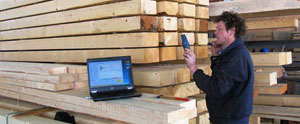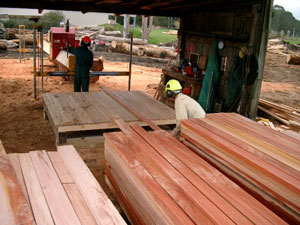Timber Grader
Tasks & duties

Timber graders may do some or all of the following:
-
check timber for faults such as knots, bad edges, stains and poor machine work
-
return faulty pieces for further machining
-
grade and mark satisfactory pieces of timber by quality and size
-
keep records of graded and defective timber
-
operate sawmill machinery
-
supervise other sawmill workers
Skills & knowledge

Timber graders need to have:
-
knowledge of the sawmill process
-
knowledge of timber characteristics
-
knowledge of the sizes and grades required for different timber products
-
machine operating skills
-
good communication skills and decision-making ability
-
basic maths skills
-
computer skills
Entry requirements
There are no specific entry requirements for becoming a timber grader. However, a first aid certificate is useful.
Secondary education
There are no specific secondary school educational requirements but School Certificate or NCEA Level 1 maths and English are seen as an advantage by most employers.
Tertiary education
A National Certificate in Wood Processing is useful.
Training on the job
Timber graders may do courses in health and safety and first aid, and attend conferences.
Timber graders can complete a National Certificate in Timber Machining – Level 4. This qualification can be completed while you are working and by attending a series of block courses at a polytechnic. It can be completed through a traineeship or Modern Apprenticeship. Trainees must sign a training agreement with their employer and register with a training organisation. Modern apprenticeships are for people aged 16 to 21 years old.
People who have gained skills on the job can gain qualifications by applying for Recognition of Current Competency (RCC).
Useful experience
Useful experience includes work in a sawmill or pulp and paper mill. Factory experience is also useful.
Related courses
Forestry Studies
Solid Wood Processing
For more information, please refer to Career Services.
Document Actions
